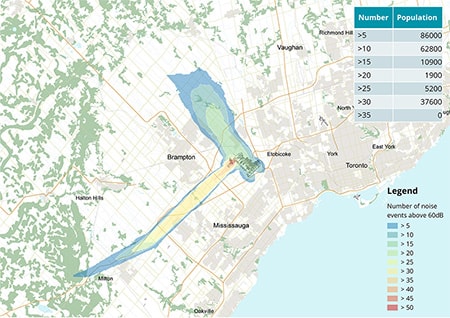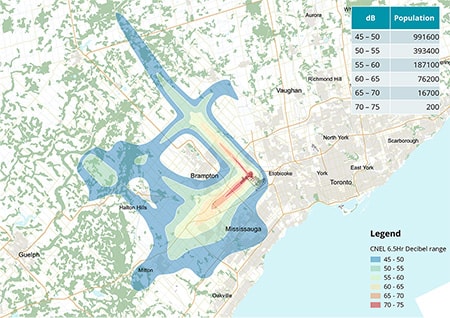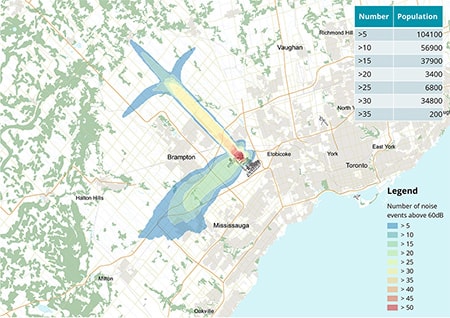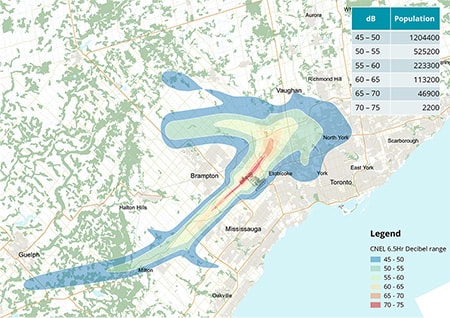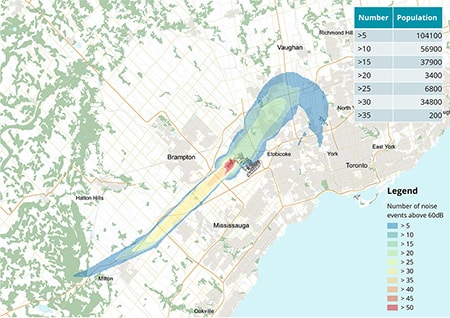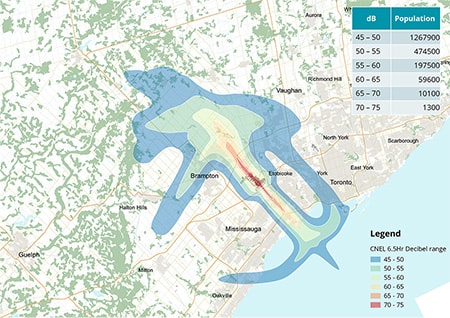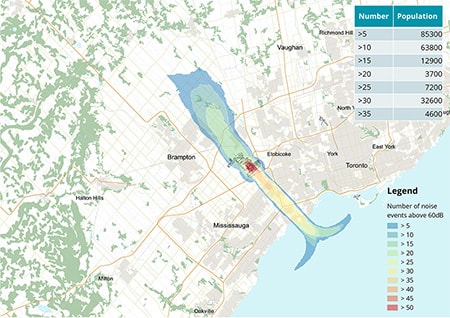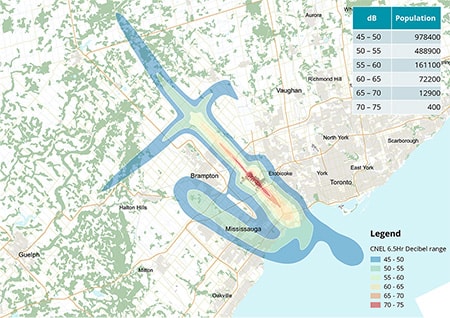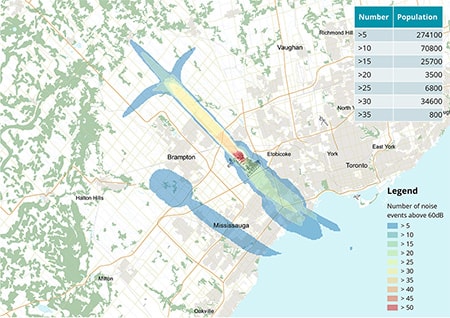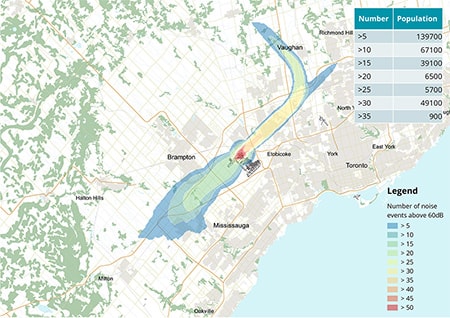Our Best Practices in Noise Management Report (PDF, 3.2 MB) found that many major international airports have a preferential runway program aimed at focusing aircraft on the least populated or unpopulated areas.
Toronto Pearson has a night-time runway usage program like this - called our Preferential Runway System - that is in place between midnight and 6:29 am each night.
Current System
Our Preferential Runway System was implemented in the 1970s, and since then the population around the airport has changed and additional runways have been built. This combined with the factors below suggest it is time to review the system:
- The current system identifies preferential runways, but factors such as wind, weather or runway availability sometimes necessitates the use of runways that are not identified as preferential. Because of this, we need to identify a Preferential Runway System that better balances number of residents flown over with a more reliable usage of the system.
- Under the current system, the first choice runway for departures and the first choice runway for arrivals cannot be used together for safety reasons. Therefore, if we are using the first choice for departures, the second or third choice is used for arrivals and vice versa; thereby avoiding head-on operations. So, we need to identify Preferential Runway System that better reflects how the airport operates, to allow for more reliable usage of the system.
The technical analysis concluded the current Preferential Runway System needed to be updated to meet the objectives of flying over the fewest people possible and to provide residents with greater clarity on preference runway pairings.
Proposed action
We are proposing a preferential runway system that provides feasible runway pairings that:
- Minimize the total population impacted by aircraft noise of 45 dB or higher between midnight and 6:30 am
- Enables more consistent use of runways identified as the preferential runways
- Provides alternatives for into-the-wind configurations for each direction, which would be used when the crosswinds and/or tailwinds don’t allow use of the first or second choice preferential runway configurations
Combined with NAV CANADA's new night-time arrival routes (Idea 1) and departure routes (Idea 2), the proposed new preferential runway pairings will minimize the number of residents impacted by night-time noise.
How the updated Preferential Runway System works
The graphics below depict the first choice preferential runway configuration, the second choice configuration, and the into-the-wind configuration options.
First choice
Whenever crosswind, tailwinds and winds-aloft allow
Second choice
Whenever crosswind, tailwinds and winds-aloft allow
Into-the-wind options
The selection is driven by weather conditions and infrastructure availability when first or second choice are not operable. Ultimately any single or pair of runways can be used.
Operation for northerly wind
Operation for southerly wind
Operation for westerly wind
Operation for easterly wind
The impacts and benefits per community
Wondering what this means for your neighbourhood during the night-time hours? Using the map below, determine which area you live in and select the corresponding expander to learn more about how the program may benefit you.
Choose your community
Noise modelling
The noise modelling below was completed using industry standard software. The traffic forecasts used were provided by the GTAA and the new night arrival flight paths proposed by NAV CANADA were used within the modelling.
The average night noise images represent the average aircraft noise that would be experienced over on an average night between midnight and 6:30 am. Average noise is a standard way that airports look at the noise impact that the aircraft operations are having on local communities; but it is not easy for individuals to relate to average noise as we hear individual noise events not average noise.
The number of noise events images provide coloured contours based on the number of noise events over 60 dB (e.g. living room with TV on quietly, conversation) within the 6.5 hour preference runway period.
Noise modelling per operation
Conclusion and next steps
Testing the new Preferential Runway System will provide more clarity about which runways pairings should be used during the preferential runway period and under what conditions. This will determine the effectiveness of the proposed preferential runway system compared to the current system.Testing will also allow us to engage with residents throughout the test period and collect feedback.
We look forward to sharing more details around the test once the guidelines are finalized.










